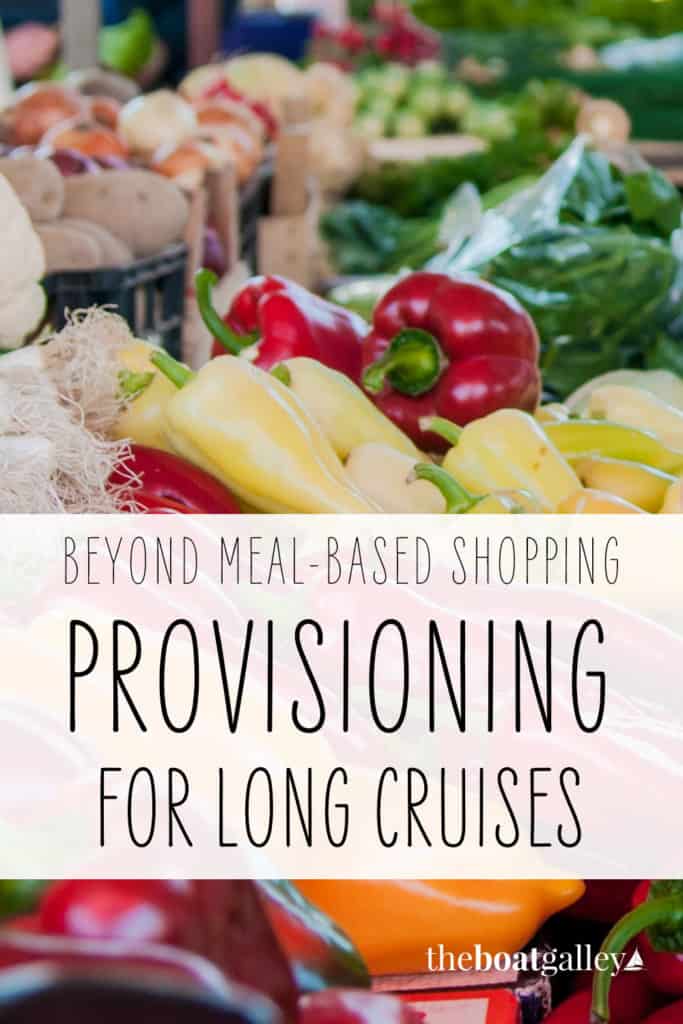
How are your provisioning choices different for a short trip versus a long one?
Buying groceries today, it struck me how the items I buy are different depending on whether I’m buying food for just a few days or for “the pantry” — that is, provisioning for the longer term.
I was buying some canned tomatoes and a gentleman was standing there, staring at all the types: whole tomatoes, fire roasted tomatoes, tomatoes for chili, tomatoes with chilies, Italian-style tomatoes, stewed tomatoes, diced tomatoes, petite diced tomatoes, tomatoes with no added salt . . . well, you get the picture. He said, “My wife just said to get a can of tomatoes. She didn’t tell me there were choices!”
Right then, it hit me. Unconsciously, I make provisioning choices. If I’m planning a specific meal — say for a short trip — I may buy a specific item to use in that meal. An example would be a can of tomatoes with Italian seasoning if spaghetti is on the menu. But if I’m buying a bunch of cans of tomatoes to use over the next month because they might be hard to find, I’ll buy just generic diced tomatoes and add my own seasonings whenever I’m using them.
Similarly, on a one-week charter, I might take a package of a rice side dish to have with the chicken breasts that I’m also having. But if I’m just stocking up on food for the next several weeks, without a specific meal plan, I’ll just buy a bag of rice.
There are a bunch of factors that go into my decision on any given item, and frankly it wasn’t until I was at the store today that I realized I did make a decision. I’ve thought about it a bit and I think this is how I decide —
- If I’m on the boat for a fixed period and may not be back soon (for example, a charter, using the boat for a long weekend each month, or towards the end of the season for part-year boaters), I try not to have food go unused or left over. So buying package mixes and pre-seasoned items will cut down on left over jars of spices and other ingredients that I’ll end up giving away. Read more about provisioning for charter trips.
- Again, for shorter times on the boat, I usually prepare at least a rough meal plan to cut down on leftovers — and with a meal plan, I can buy specific things for specific meals (for example, tomatoes with chilies for taco soup).
- If I’m provisioning “for the pantry” — not knowing exactly what I’ll make with something — I buy food in its simplest form, without seasonings or other ingredients.
And while I used examples of tomatoes and rice, the same principle applies to lots of other foods: buying flour and sugar (and some other things) vs. a packet of pancake mix and one of biscuit mix; a big box of plain oatmeal (that I can use for cookies and baking as well as breakfast) or apple-cinnamon oatmeal packets for breakfast.
I’ll admit that I tend in general to buy many plainer foods as I generally don’t plan meals too far in advance. But when we have a trip of short duration — on the boat, camping or even having guests for a few days (okay, that’s not a trip) I do plan meals! And when I do, I tend to buy food more specifically for the recipes I know I’ll be making.
Learn More

Carolyn Shearlock has lived aboard full-time for 17 years, splitting her time between a Tayana 37 monohull and a Gemini 105 catamaran. She’s cruised over 14,000 miles, from Pacific Mexico and Central America to Florida and the Bahamas, gaining firsthand experience with the joys and challenges of life on the water.
Through The Boat Galley, Carolyn has helped thousands of people explore, prepare for, and enjoy life afloat. She shares her expertise as an instructor at Cruisers University, in leading boating publications, and through her bestselling book, The Boat Galley Cookbook. She is passionate about helping others embark on their liveaboard journey—making life on the water simpler, safer, and more enjoyable.
Simplify meal prep on board with proven strategies for provisioning, maximizing fridge space, and cooking delicious meals aboard your boat.
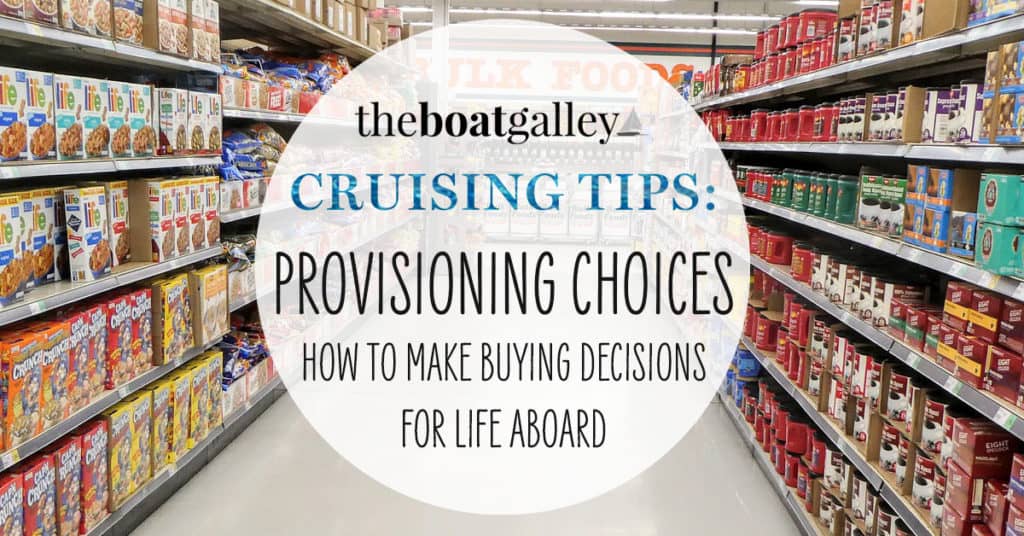
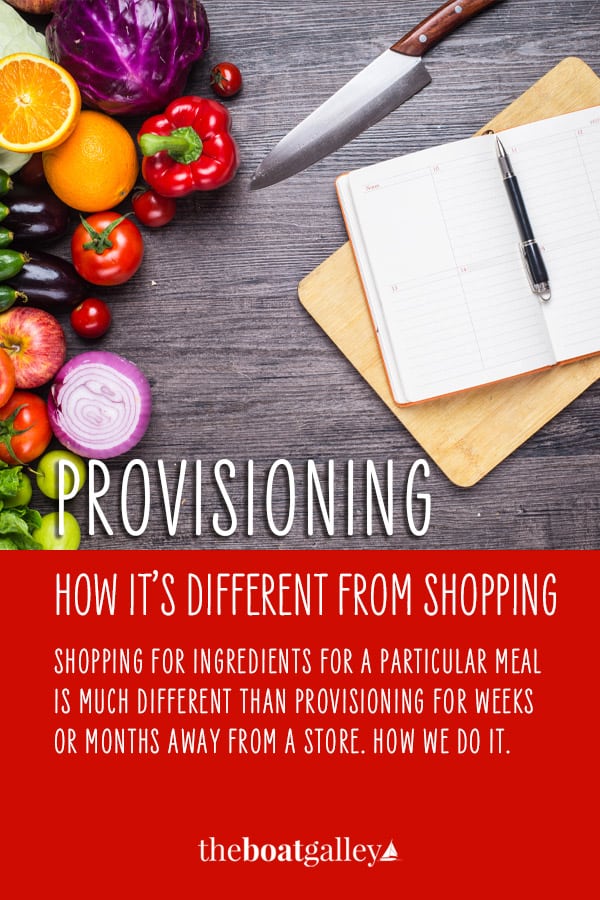

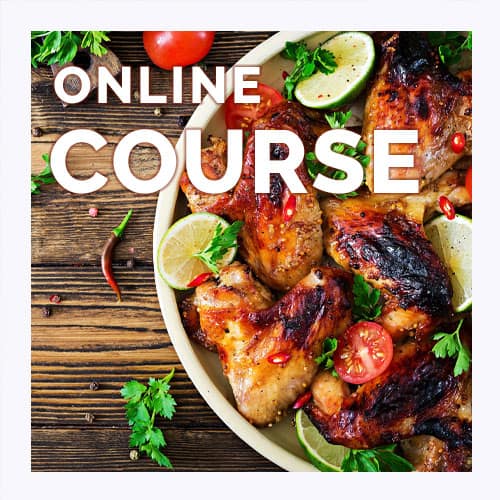
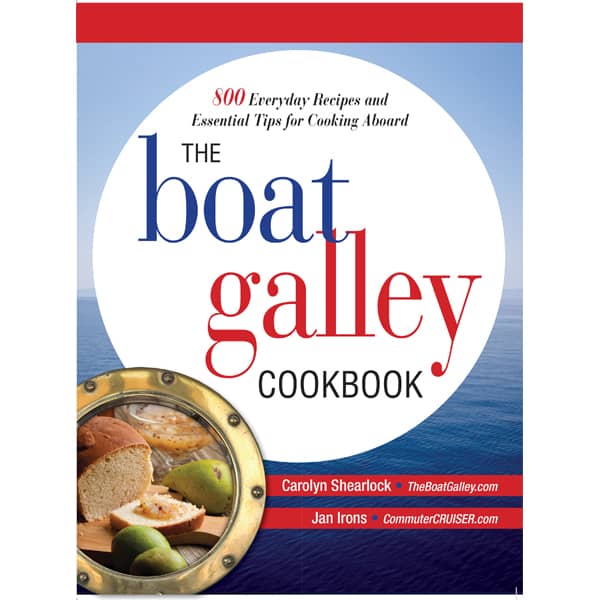





michael mckenna says
anyone know about canned butter? where to buy, how long it lasts after being opened> etc. thanks
Chris link says
Red feather brand canned butter lasts forever in the small cans but same as grocery store sticks once opened.Camping supply and survivalist type websites have it.
Kathryn MacDonald says
I’m not sure about canned butter, but I like to get a butter flavored coconut oil made by Nutiva. It tastes like butter on my toast, doesn’t need refrigeration and it is better for me, so it’s a win win.
Dave Skolnick (S/V Auspicious) says
Most of the world doesn’t refrigerate butter. You really don’t need to. I do freeze it in bulk but the working butter I keep in a butter bell, a staple on European counters.
sue says
My thoughts exactly. I tend to go with food in its simplest form most of the time as thenI have greater flexibility. Only if I am making something special willcI go outcand get the special ingredients.
Zoe Catchlove says
Guy Eilbeck
Jake Krige says
Ilke Krige
Dave Skolnick (S/V Auspicious) says
One consideration you left out is that pre-packaged foods (like that rice side dish) are likely to have a lot of extra salt.
I do agree with Carolyn about the challenge of left-over spices. This is an easy issue on short durating cruises and charters: just bring small Ziploc bags of spices from home. For longer duration it does help to reduce the diversity of spices we carry. You can also organize a spice swap at a beach potluck in cruiser anchorages.
Michel Guay says
I thought there might be more to it. I have been preparing for a longer trip and though I am not full time live aboard I do tend to keep my pantry styles similar [home/boat]. Meal planning is usually based on what I have around. I find this works well. If I want to make a special meal I will get what I’m missing. But I did notice as you had mentioned I shop the difference in what I might pick up for a weekend vs a month.
Michael Guelker-Cone says
One consideration we have is that, like most of us I’d imagine, we have a very small freezer. When we make purchases that we know need to be frozen, we often look for items of the same size and shape and can be stackable. We repackage, taking meat out of the styrofoam tray and resealing it with a sea-a-meal. hat takes up less space allowing for more stuff to be packed into the freezer. The more packed your freezer is the easier it will be to keep things frozen, too. We use the seal-a-meal for a lot of things if we are going on an extended trip.